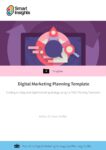Examples and definitions of integrated marketing today. Find out why integrated omnichannel marketing is essential to the success of your business
Without getting too Aristotelian, with marketing, the whole is most certainly more than the sum of its parts - when it's done right that is. But what is 'Integrated Marketing done right'? The goal of practicing integrated marketing is to align your multichannel marketing mix. As channels and platforms continue to evolve, the concept has extended to include a structured approach to:
- Search
- Social media
- Display
- PR
- Landing pages
- Product catalogs
- Email marketing
- Direct marketing
At Smart Insights, we define Integrated Marketing as follows:
"Integrated Marketing is a strategic approach to integrating communications and interactive experiences targeting defined audiences and individuals which coordinates all aspects of marketing of a brand, including:
- Paid media (offline advertising, direct marketing and online display and programmatic);
- Earned media (Organic search fuelled by content marketing, PR and online influencer outreach)
- Owned media (including social media, on-site UX, customer service and direct messaging through email and mobile)
in order achieve consistent messaging customised where possible by channel which presents a unified and seamless experience to consumers across the customer lifecycle or path to purchase".
That's the essential essence of integrated marketing - that by coordinating messages across channels the results from increasing brand awareness, familiarity, favourability and purchase intent are far higher than when taking a less integrated approach that fails to coordinate.
With the introduction of a whole host of new digital marketing channels over the past decade, the integration of marketing channels has never been more difficult or more important. Check out the 18 most important digital marketing techniques to make sure you're not missing any opportunities.
Plan and optimize your omnichannel digital marketing strategy using The Race Framework to structure your digital media, digital experiences, and digital data.
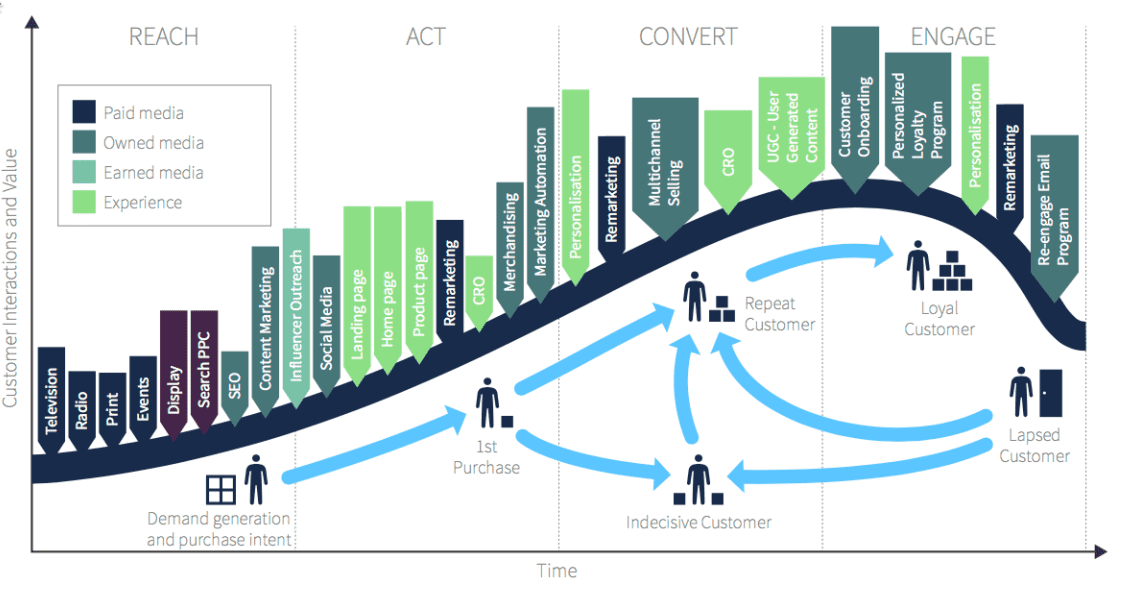
Structure your marketing plan around a customer lifecycle proven to boost performance. Join Smart Insights as a Free Member for instant access to our free digital marketing plan template to hone your skills and drive the results you need.
Free digital marketing plan template
Our popular marketing planning template is structured across the Smart Insights RACE Framework. Join Smart Insights as a Free Member to download our digital marketing plan template today
Access the Free digital marketing plan template
Defining Integrated Marketing
The Smart Insights definition of Integrated Marketing, given above, puts the overall focus on marketing within the customer lifecycle, defined in The RACE Framework.
In addition to our own definition, the 3 definitions below demonstrate 3 different approaches to integrated marketing strategy; Marketing-Schools focuses on customer-facing content, Multimedia Marketing, on linking messages to work together, and Wikipedia on consistency and impact of messages.
- Marketing-Schools
Integrated Marketing is a marketing strategy that stresses the importance of a consistent, seamless, multi-dimensional brand experience for the consumer. This means that each branding effort – across television, radio, print, Internet, and in-person – is presented in a similar style that reinforces the brand’s ultimate message.
- Multimedia Marketing
Integrated Marketing Communications is a simple concept. It ensures that all forms of communications and messages are carefully linked together. At its most basic level, Integrated Marketing Communications, or IMC, as we’ll call it, means integrating all the promotional tools, so that they work together in harmony.
- Wikipedia
Integrated Marketing Communications is the use of marketing strategies to optimise the communication of a consistent message of the company's brands to stakeholders [...] which when combined together builds a clearer and vaster impact than if used individually.
Within the 3 given definitions, although each has a slightly different focus, remains a consistent definition of integrated marketing, and its benefits for your business. There is no doubt that integrated planning can transform your digital marketing strategy ROI.
Why integrate marketing channels?
You may think your marketing is the best thing in the world, but the reality is pretty much everyone is going to forget it very quickly if they only experience it once. To make an impact you have to coordinate your messaging.
Have you ever wondered why McDonald's are constantly advertising? Everyone knows who McDonald's are. Everyone knows what McDonald's offer and there is one on every street corner. So why do they advertise? Because there is power in reminding consumers about your brand, even if they already know that it exists.
Of course, they may also want to change the perception of its values and what it offers, in these instances an integrated marketing campaign honing-in on the key messages across all channels is absolutely vital. This is why consistent messaging across channels is so critical. Without it, your message will fail to make an impact and you will just be yelling into a gale.
Did you know - nearly half of companies don't have a clearly defined digital marketing strategy? These companies are missing opportunities for better integration and risk losing customers due to out-of-date processes.
21st-century marketers need practical marketing strategy tools and templates backed up by expert theory and real-life case studies to ensure marketing excellence.
That's why we have ready-made marketing tools, and next-step recommendations to help you optimize your customers' experiences of your company.

Recommendation 1: Review always-on digital marketing
Digital media and the web have brought us the opportunity to constantly share via social media (including UGC, user-generated content) and create immersive experiences on websites and in mobile apps. We can also personalize across ads, website, and email through techniques like re-targeting and website personalization.
We also need to plan our communications around cross-device usage, looking beyond burst campaigns to longer-term continuous online visibility as people and businesses look for our products, services, and brands. This strategic approach can be defined as 'always-on marketing', as outlined in the passage below, taken from the Selecting campaign types and ‘always-on’ activity module in our Campaign Planning Learning Path.
"Continuous or 'always-on' digital communication activities are a longer-term use of digital marketing communications aimed at attracting visitors to the site for customer acquisition (such as search engine, affiliate marketing and online sponsorship) and retention (e-newsletter marketing, for example).
These activities tap into the continuous demands seen in many industries as people search for products or look for reviews on social media."
Recommendation 2: Review your Return on Investment
ROI is a key measure for integrated digital marketing since it allows comparison of the returns from different marketing activities relative to each other. This is not possible using simple profit, which is an absolute, not relative, amount.
In this example, revenue of $30,000 was generated as the result of one marketing channel, however, the initial channel investment alone was $10,000, contributing to only a small return on $2,000.
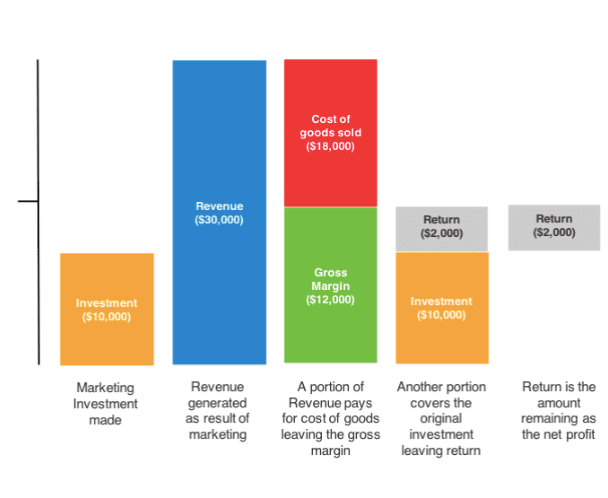
Setting an allowable cost per acquisition is crucial in controlling media costs and is often used to control the level of bids, e.g. in Google Ads. For well-controlled paid search marketing, it is vital you calculate and define an allowable cost per acquisition for different types of products.
Recommendation 3: Review competitor integrated marketing
Really good integrated marketing is about more than just having the same slogan, ident and brand colours splashed across every marketing channel. It weaves a coherent story through everything the brand does.
One of the best examples of this is Compare the Market's classic 'Compare the Meerkat' campaign, which has been running for over 8 years. It integrates social media, search, TV and more, whilst using real Meerkat dolls as gifts to keep compare the market's brand awareness high.
Compare the market's use of social:
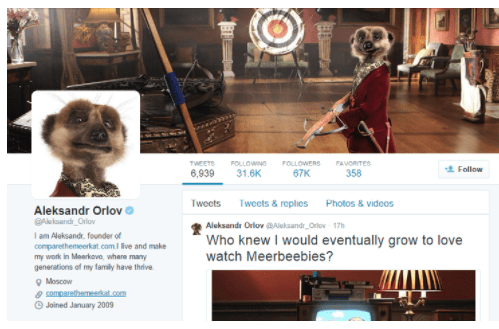
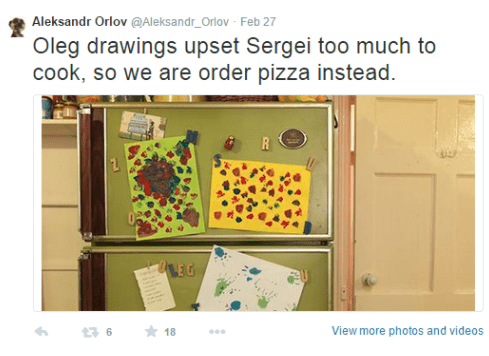
Compare the market's use of TV
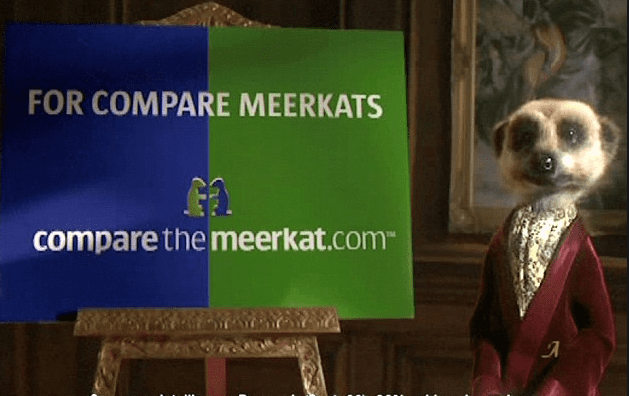

Compare the market's use of outdoor:
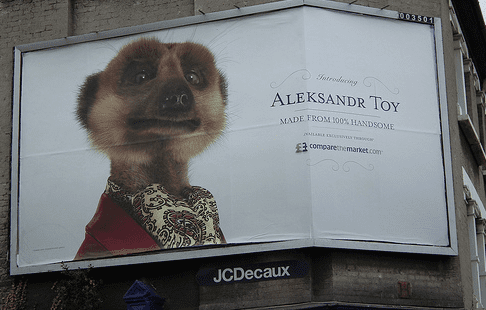

By using the same set of characters across all mediums, compare the market have successfully integrated all their marketing channels and managed to create one of the most memorable and long-lasting ad campaigns of all time.
Another great example of an integrated marketing campaign is Coke's 'share a coke with' campaign, which used unified messaging across TV, Social, Outdoor and Display leading to a 7% uplift in Coke consumption by the target demographic, making it one of the most successful Coke campaigns in history.
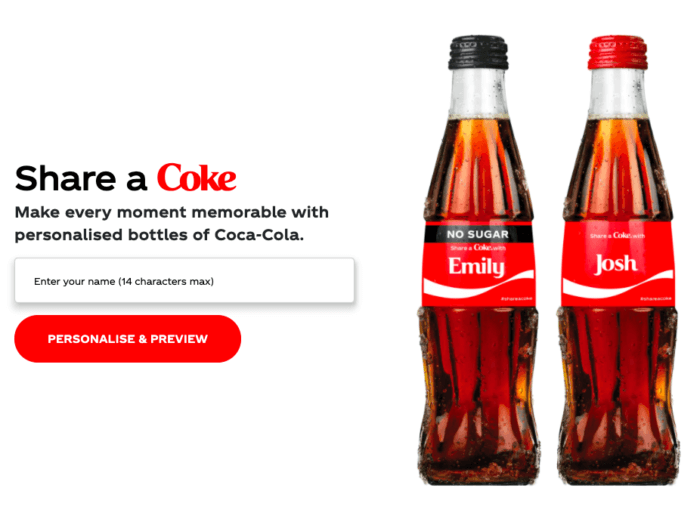

Example of poorly integrated marketing
Integrated marketing is hard to get right, and whilst all big brands attempt it, not all succeed. Even multi-billion dollar brands like Intel get it wrong. We looked at their website and social media channels, and not only did they not match at all in terms of messaging, neither featured Intel's official slogan. What's the point of having a slogan if you don't use it?
Looking at their website below, there is no mention of their current brand message; 'Experience What's Inside'.
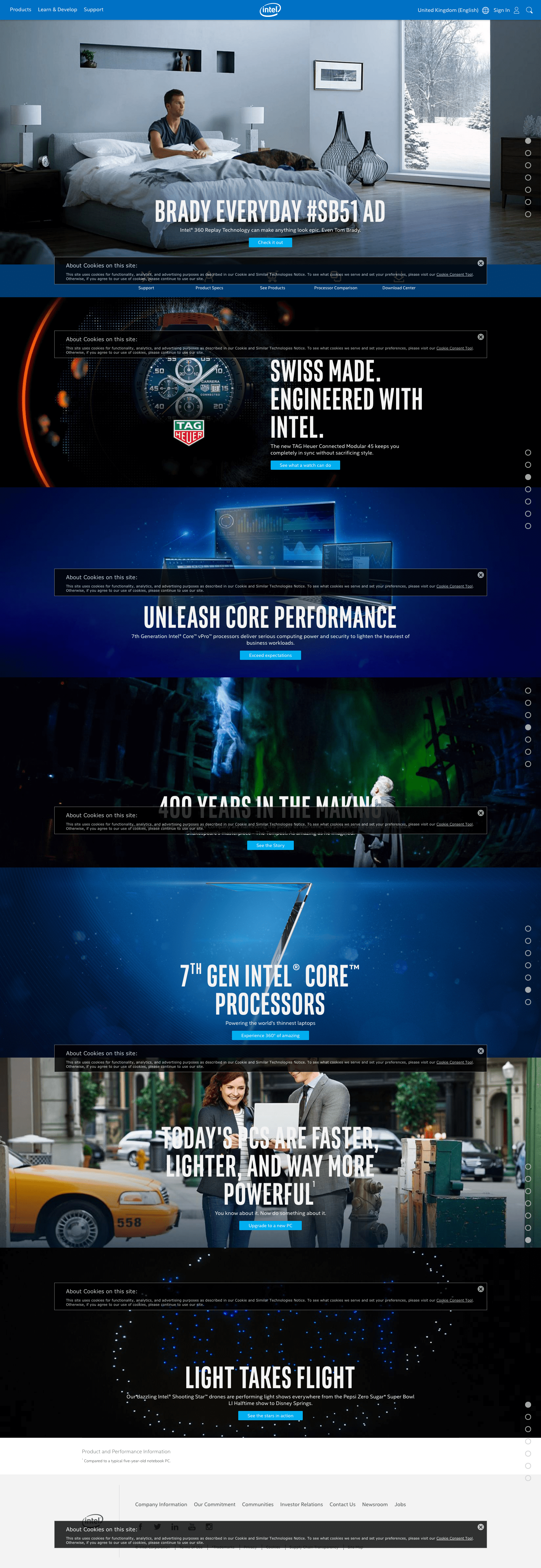
Nor does their social media match what is on the website. The social media profile picture using different shading to the logo on the website, and the slogan used on the cover images is neither the official slogan nor does it appear on the website.
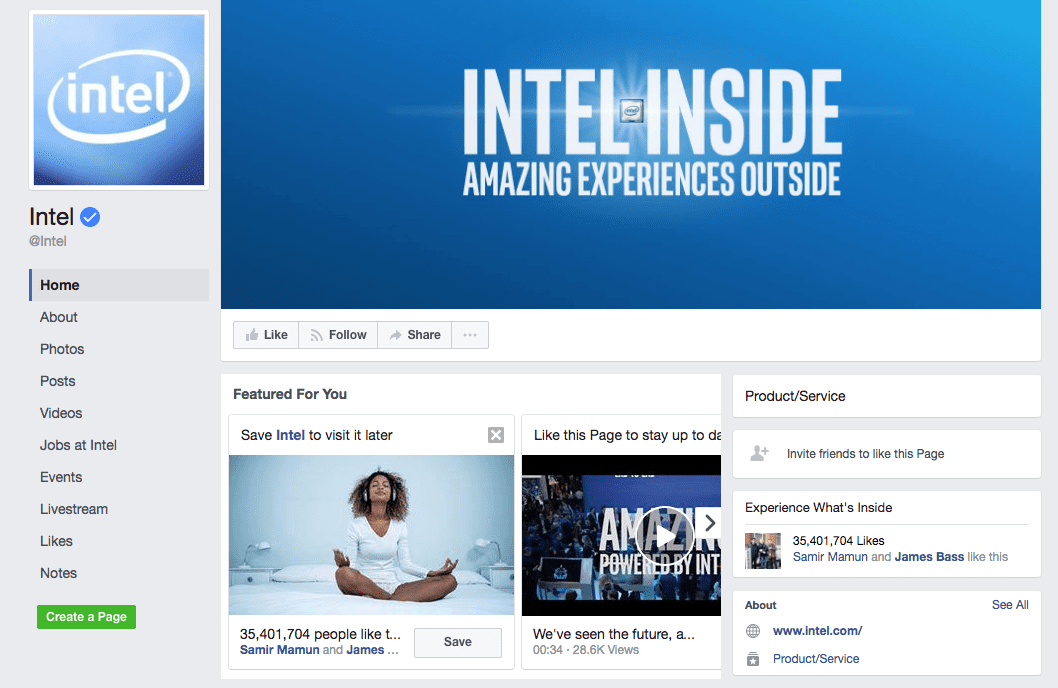
How to develop a successful integrated marketing strategy
Intel's failure shows it's hard to get integrated marketing right, given even huge brands manage to make a right mess of it. To successfully integrate your marketing so all channels are pulling in the same direction, you need to plot all customer touchpoints with your brand throughout the customer decision-making process.
Your integrated marketing strategy must need to integrate and align all customer channels and experiences with the same messaging, at each stage of the journey. This is where The RACE Framework is your guide.
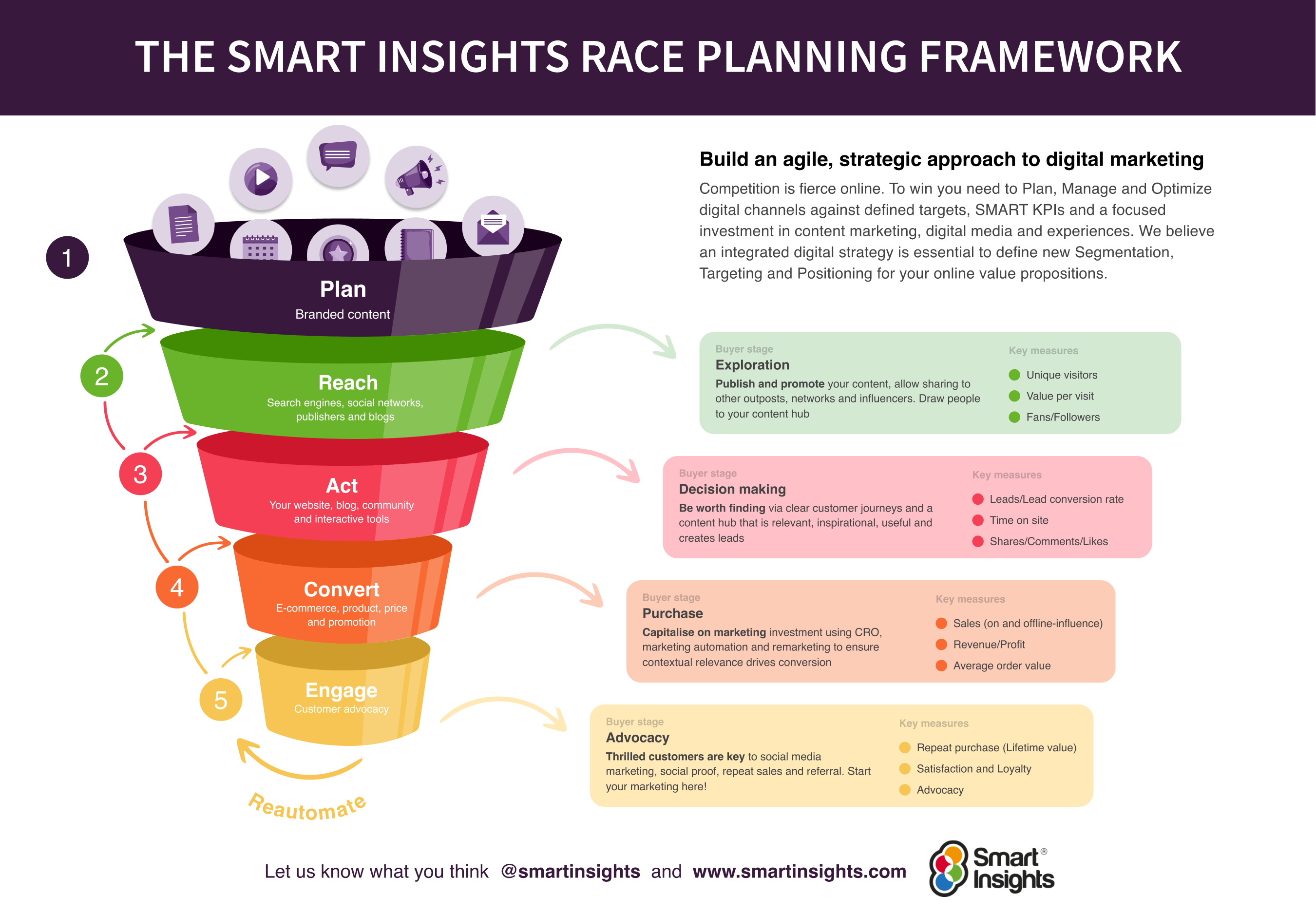
Free digital marketing plan template
Our popular marketing planning template is structured across the Smart Insights RACE Framework. Join Smart Insights as a Free Member to download our digital marketing plan template today
Access the Free digital marketing plan template




